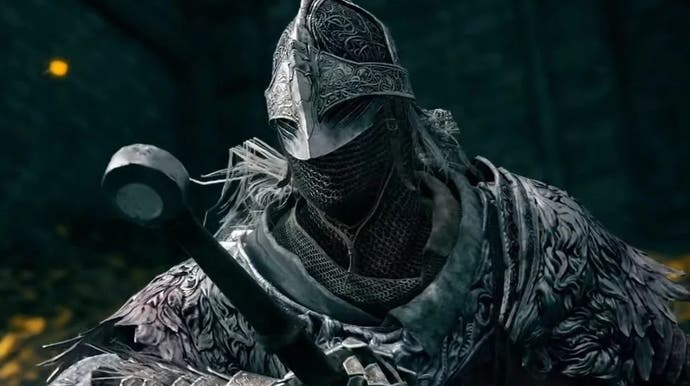Elden Ring hands-on: how the beta code runs on all consoles
The cross-gen story so far.
The recent Elden Ring closed network test gave us an invaluable opportunity to spend some time with From Software's latest - albeit limited owing to tight test periods. Without question, this is one of the most exciting games of 2022, and the test sample proved generous. This is From Software evolving its punishingly hard 'Soulsborne' concept, though the more linear design of prior works shifts to the open world - a decaying land dubbed 'The Lands Between'. Every inch of its lore, every grotesque creature, is sumptuously rendered on a scale quite unlike anything we've seen from this engine, this studio. Grass draws in thick, and far to the horizon. There's a day/night cycle, plus weather states including rain, storms. And to cover so much ground across its wide open terrain, of course, you're given a steed to ride early on, complete with a nifty double jump. This freedom to adventure in any direction, to go anywhere, is the key to Elden Ring's appeal.
The closed network test limits the player to Limgrave, the first region of Elden Ring, so while restrictive in some respects it's still gigantic compared to most demos. Many long hours of gameplay are contained therein - the catch being that only those who gained extra early access (including Eurogamer's own Aoife Wilson) would have had the opportunity to truly dig deep into what the beta offered. In summary: you pick one of five classes to start and then, you're simply free to choose wherever you want to go: free to discover dungeons or battle the many bosses as you please - all told a pretty impressive feat for a 9GB install. And somehow, despite the vanishingly small time window available to play, we managed to test Elden Ring on every console: seven machines in total and a grand total of 11 different gameplay permutations.
From Software breaks new ground here with its world-building, but by and large, we're in familiar territory when discussing the game on last generation machines. You can consider PlayStation 4 as the main template for a last-gen experience. Foliage density, shadows and texture quality are broadly matched with PS4 Pro, and even Xbox One X. In other words, while resolutions may differ between these three, much else is the same even on the enhanced machines. The difference? PS4 renders at a native 1080p, whereas the two enhanced machines target 1800p instead, with PS4 Pro using checkerboard rendering to achieve this number. Xbox One X on the other hand targets 1800p, but similar to Sekiro: Shadows Die Twice, it uses dynamic resolution scaling (a 1512p-1800p window, by the looks of it). Xbox One is the outlier. Not only is 900p the target, but foliage density, texture filtering, the depth of field effect, shadow quality and ambient occlusion also seem to be pared back, putting this into 'lower tier' territory. Animations on enemies in the Xbox One build also occasionally drop to half-rate in some scenarios - 15fps - which looks very odd indeed.
Performance-wise, we are in beta code territory and we would hope to see improvements across the board for launch - even though typically, From's network tests have been remarkably similar to final code. From what we've seen so far, once again, there are parallels with Sekiro. Base PS4 an Xbox One target 30fps, but the illusion of fluid play is compromised by an eternal bugbear of the From Software engine: inconsistent frame-pacing. The game simply aims to deliver 30 individual frames per second, but doesn't match this in any way to the display refresh. The work of Lance McDonald in producing his unofficial 60fps patch for Bloodborne highlights the issue and remarkably, years on, it still has not been addressed. The situation on Xbox One is further problematic owing to more regular performance drops. PS4 isn't perfect here, but there are scenarios where Xbox One can bottom out near the 20fps line.
The enhanced One X and PS4 Pro machines also follow the Sekiro playbook, simply by removing the frame-rate limiter and letting the engine have at it. This effectively means frame-rates run in a 30-40fps window, though results really depend on the scenario, and you can easily move north or south of that. PS4 Pro can sometimes exhibit a performance advantage over Xbox One X, likely thanks to its checkerboarding solution. The snag here is, you don't have the consistency that a locked, properly frame-paced 30fps would deliver - and so it's rarely a visibly smoother game to play as it stands. Barring a drastic optimisation pass, it's a scenario where it's unlikely we'll see 60fps achieved any time soon on either machine.
Based on the network test, it's fair to say that there's a definite 'win' in several ways by running Elden Ring on a current generation machine. You'll die a lot in this game and depending on platform, loading times are 2x to 3x faster on PS5 or Series X compared to last-gen, thanks to the solid-state storage. This is especially pronounced on PlayStation 5, which even has a tangible advantage over Xbox Series competitors - though whichever new console you have, you're onto a winner.
The second key advantage is enhanced visuals, the lion's share of which are delivered in both quality and frame-rate modes. We talked about the 'standard' graphics tier for PS4, Pro and Xbox One X but both modes on the new consoles offer richer visuals including much improved foliage density, higher precision shadow quality and improved ambient occlusion. The frame-rate mode sees both PS5 and Series X consoles aiming for a dynamic 1512p-2160p (but more often maxing out at 1800p), while Series S lowers that to a 1008p-1440p DRS window. Meanwhile, quality modes on the higher power Series X and PS5 hold rigidly to a native 4K, with Series S locking to 1440p instead. There's not much to split the two modes - though quality mode seems to increase shadow quality still further. I also noticed something that I suspect is a bug: motion blur is disabled in Xbox Series consoles' frame-rate mode, but remains active in the PS5 equivalent.
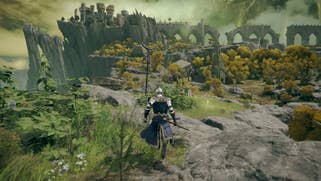
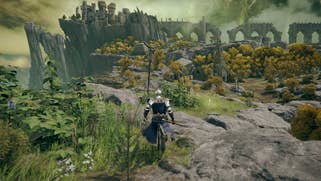

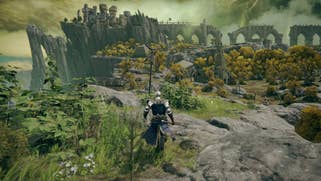
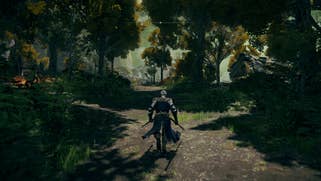
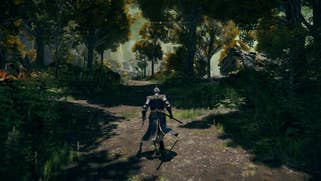

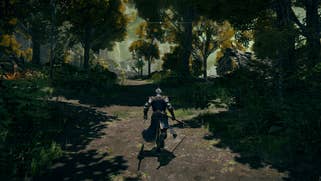






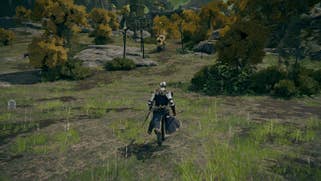
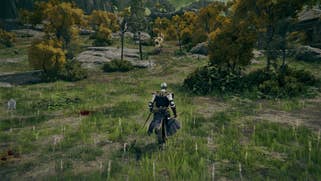




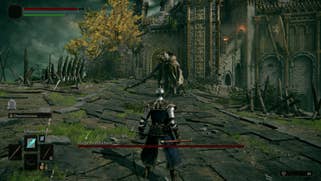
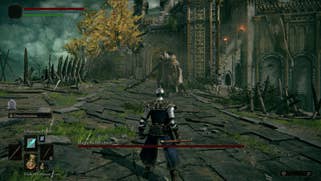
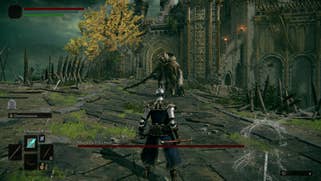
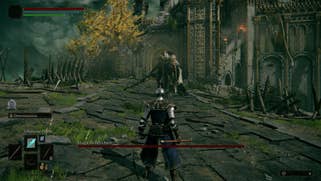
Is Elden Ring at 60fps viable on any machine? Yes, but there's a catch. Sadly even with the frame-rate mode on current-gen machines we're still falling short of a full 60fps. Both modes run unlocked, leaving quality mode in a bit of a 30-40fps no man's land on PS5 and Series X, and more towards the 30fps end on Series S. We'd really like to see a consistent 30fps lock here with consistent frame-pacing but as this does not appear to be a feature of the engine to date, we may be hoping for too much from final code.
Meanwhile, the frame-rate mode can't quite hit 60fps on any system: it's 45-60fps on PS5, typically slightly lower on Series X, and lower still on Series S. Based on the network code at least, the Sony platform offers mostly higher performance levels (though Series X can have its moments too), a smidgen of extra resolution and faster loading times. It'll be interesting to see if From Software can improve showings across the board here as a consistent 60fps makes a big difference. That is, unless you have a Series X with a VRR display, which should smooth out its issues in the frame-rate mode.
There is an interesting wrinkle to the performance situation, however. Running the PS4 Pro version of the network test on a PlayStation 5 gets you that coveted, locked 60fps that the native app currently does not offer. Visuals are downgraded to Pro settings of course: worse foliage and a reconstructed 1800p image being the two big points. Even so this is the most stable way to achieve 60fps on console based on this build. However, this forces a choice from the player: it's highly unlikely that save games will be interchangeable between the PS4 and PS5 app (it's certainly not the case in the network test). Losing so many next-gen features - including slower loading speeds than the PS5 native app - to claw back 60fps performance is a big compromise, though arguably some will gladly take it. We're more hopeful of improvements to frame-rates in time for launch, but in the busy spots we've seen so far, that may be too much to ask - in which case, all eyes will be on the PC version.
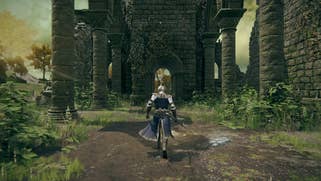

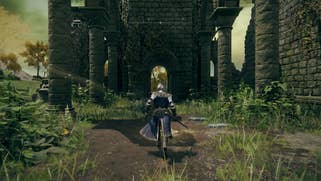
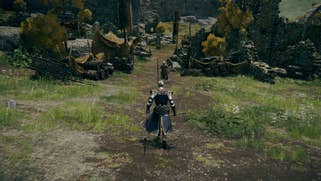


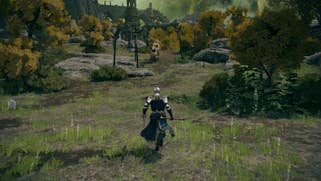
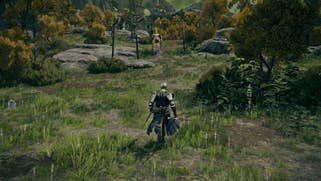




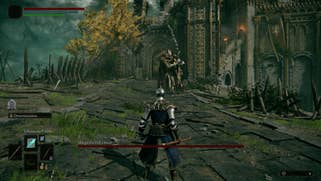
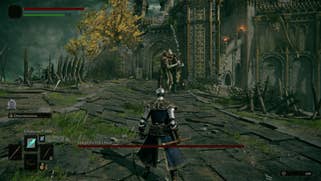
Still, despite the network test offering us the chance to preview so much of Elden Ring, there's more to come. Official comms describe the inclusion of ray tracing - something we've yet to see from the network test. What we can say for sure is that gameplay-wise, Elden Ring works both as a jumping on point for those who've yet to experience a Souls game, while delivering a treat for series veterans. Unlike Dark Souls, there's no mystery in where to go next. Your bearings are always set thanks to rays of light guiding you to your ultimate destination, and a helpful map. There's fast travel too right from the get-go, while the open design means you can adventure at your own pace within the six regions - of which Limgrave is just one. This freedom means you can level up, augment your weapons and take detours around a tough boss until you're ready to dive in. So, in terms of simply exploring Elden Ring's huge realm, From Software has made every effort to streamline its design for everyone. But that's not to say it's easy.
The fact is Elden Ring is still closest in its DNA to Dark Souls, in its challenge and combat. In the thick of battle, controls are mostly unchanged from Dark Souls 3, with a pinch of Sekiro in the form of a jump button - and a crouch mode for stealth. Otherwise, the lock-on system, the invincibility frames on side rolls, the careful metering out of stamina for light or heavy attacks, the guarding and the dodging. It's all there. Even bonfires make a return - now named Sites of Grace - to let you respawn after death. And yes, there's a lot of dying. From the Tree Sentinel to the flying dragon of the marshes, Elden Ring demands a keen eye for spotting attack patterns. Practice, anticipation and reaction are required. Expect a firm challenge. Existing Souls fans will find a comforting familiarity in its difficulty. But for the uninitiated, there's no escaping it. You will have to learn Elden Ring's controls, the rhythm of Souls combat, to rise to the challenge.
The network test worked as a teaser with access to its wealth of content limited by its tightly constrained access times across the weekend, but the stage is now set for the February release and of course, we'll return to run the rule over final code on all platforms.
